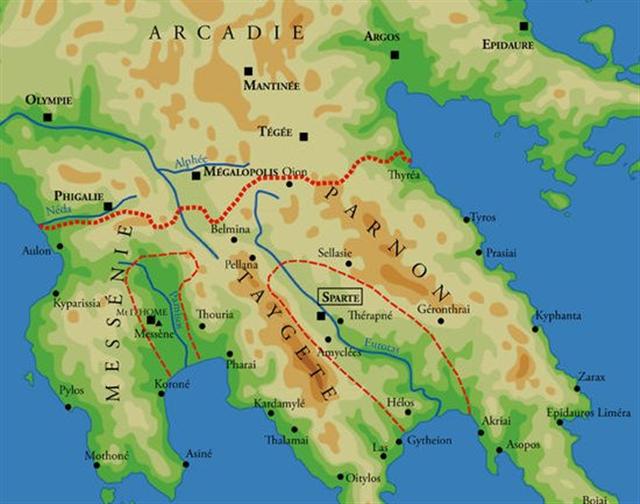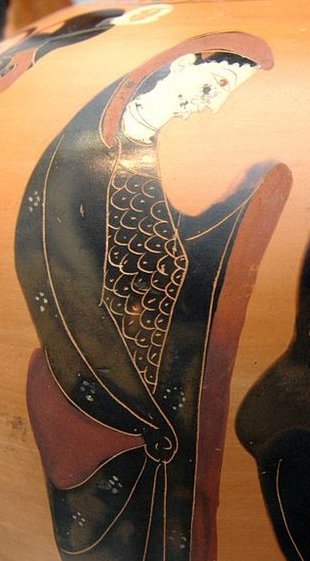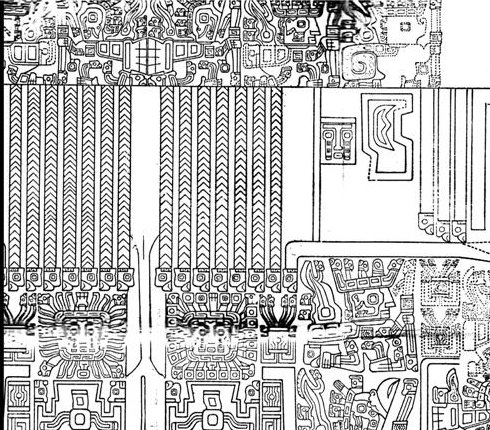There were 55 days from March 2 (61) to April 26 (116 = 4 * 29):
Possibly this had to do with the distance from 0h to the heliacal rising of the 6 stones, Tau-ono, beginning in May 135 (*55).
... To a casual glance, the Pleiades cluster appears as a fuzzy patch like a swarm of flies over the back of the bull ... According to mythology, Alcyone and Celaeno were both seduced by Poseidon. Maia, the eldest and most beautiful of the sisters, was seduced by Zeus and gave birth to Hermes; she later became foster-mother to Arcas, son of Zeus and Callisto. Zeus also seduced two others of the Pleiades: Electra, who gave birth to Dardanus, the founder of Troy; and Taygete, who gave birth to Lacedaemon, founder of Sparta.
Asterope was ravished by Ares and became mother of Oenomaus, king of Pisa, near Olympia, who features in the legend of Auriga. Hence six Pleiades became paramours of the gods. Only Merope married a mortal, Sisyphus, a notorious trickster who was subsequently condemned to roll a stone eternally up a hill ... Eratosthenes says that Merope was the faint Pleiad because she was the only one who married a mortal. Hyginus and Ovid also recount this story, giving her shame as the reason for her faintness, but both add another candidate: Electra, who could not bear to see the fall of Troy, which had been founded by her son Dardanus. Hyginus says that, moved by grief, she left the Pleiades altogether, but Ovid says that she merely covered her eyes with her hand ...
... Merope often is considered the Lost Pleiad, because, having married a mortal, the crafty Sisyphus, she hid her face in shame when she thought of her sisters' alliances with the gods, and realized that she had thrown herself away. She seems, however, to have recovered her equanimity, being now much brighter than some of the others. The name itself signifies 'Mortal' ... Electra, although for at least two or three centuries the title of a clearly visible star, has been regarded as the Lost Pleiad, from the legend that she withdrew her light in sorrow of witnessing the destruction of Ilium, which was founded by her son Dardanos ... or, as Hyginus wrote, left her place to be present at its fall, thence wandering to Mizar as Άλώπηξ, the Fox, the Arabs' Al Suhā, and our Alcor. Ovid called her Atlantis, personifying the family. The Pirt-Kopan-noot tribe of Australia have a legend of a Lost Pleiad, making this the queen of the other six, beloved by their heavenly Crow, our Canopus, and who, carried away by him, never returned to her home ... Gb3-26 has a 'stone' (tau) growing high and in Gb3-30 was its opposite, a season (tau) of falling down:
... The Malay word for 'year' is taun or tahun. In all Polynesian dialects the primary sense is 'a season', 'a period of time'. In the Samoan group tau or tausanga, besides the primary sense of season, has the definite meaning of 'a period of six months', and conventionally that of 'a year', as on the island of Tonga. Here the word has the further sense of 'the produce of the year', and derivatively 'a year'. In the Society group it simply means 'season'. In the Hawaiian group, when not applied to the summer season, the word keeps its original sense of 'an indefinite period of time', 'a life-time, an age', and is never applied to the year: its duration may be more or less than a year, according to circumstances. So far our authority (Fornander, I, 124; cp. 119). It seems however to be questionable whether the original sense is not the concrete 'produce of the seasons', rather than the abstract 'period of time'. It is significant that on the Society Islands the bread-fruit season is called te tau, and the names of the other two seasons, te tau miti rahi and te tau poai, are formed by adding to this name ... At the time of Bharani the Sun would have reached the place at Gb3-26 in "February 23 (Terminalia) and 183 + 4 = 187 days later the Sun would have reached Spica and Alcor. ... Proclus informs us that the fox star nibbles continuously at the thong of the yoke which holds together heaven and earth; German folklore adds that when the fox succeeds, the world will come to its end. This fox star is no other than Alcor, the small star g near zeta Ursae Majoris (in India Arundati, the common wife of the Seven Rishis, alpha-eta Ursae ...
The tresses of Pacha-mama (Mother Earth) can be counted as 396 + 4 = 400 = 214 (AUGUST 2) + 182 + 4 (to reach the magicians rope up at Alcor):
... Religion then, as among other peoples of the continent, was an animism based on cosmic philosophy, in which all the phenomena of nature and all visible things which had a relation with material life, were animated. The ground, the food-giving earth, was Pachamama; the moon, Paximama; the lake, Kochomama. Even the wind was a divine being, Huayra-huirakjocha. The hills and especially the volcanos were also considered to be divinities and were called Achachilas. [A footnote explains achachi as grandfather] ...
|
|||||||||||||||||||||||||||||||||||||||||||||||||||||||||||||||||||||||||||||||||||||||||||||||||||||||||||||||||||||||||||||||||||||||||||||||||||||||||||||||||||||||||||||||||||||||||||||||||||||||||||||||||||||||||||||||||||||||||||||||||||||













